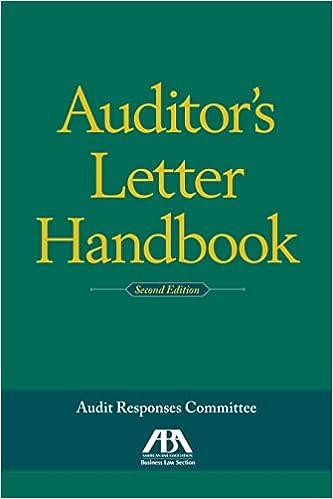Question
For the following questions (8-10) about transfer pricing, assume the organization is X Co. Division S produces a component that can be sold to outside
For the following questions (8-10) about transfer pricing, assume the organization is X Co. Division S produces a component that can be sold to outside customers at a fair market price or to Division B at a transfer price. Division B uses the component to produce a finished product it sells to outside customers. Division B can also purchase the component from an outside supplier, Co. O at a fair market price.
8. Division S produces a component that is used by Division B. Division Ss costs of manufacturing the component is: Direct materials $30; Direct labor $8; Variable overhead $10; Fixed overhead $12 (based on a practical volume of 250,000 components).
Division S also incurs these costs: fixed selling & administrative $1,200,000, and variable selling $4/unit.
Division S expects to sell only 200,000 components next year. The variable selling expenses are avoidable if the component is sold internally.
Division B has been buying the same component from an external supplier for $80 each. It expects to use 40,000 units of the component next year. The manager of Division B has offered to buy 40,000 units from Division S for $56 each.
The maximum/minimum transfer price should be respectively:
| a. | $80/48 | c. | $48/48 |
| b. | $60/50 | d. | $38/30 |
9. Refer to question 8. Suppose Divisions S and B agree on a transfer price of $56. What is the benefit to each division respectively?
| a. | $320,000/$960,000 | c. | $960,000/$320,000 |
| b. | $1,280,000/$0 | d. | $0/$1,280,000 |
10. Refer to question 8. If S is at full capacity, the transfer price should be:
| a. | Between $30 and $80 | c. | $30 | ||||||||||||||||||||||||||||||||||||||||||||||||
| b. | $80 | d. | $60
16. Time-s For the following questions (8-10) about transfer pricing, assume the organization is X Co. Division S produces a component that can be sold to outside customers at a fair market price or to Division B at a transfer price. Division B uses the component to produce a finished product it sells to outside customers. Division B can also purchase the component from an outside supplier, Co. O at a fair market price.
8. Division S produces a component that is used by Division B. Division Ss costs of manufacturing the component is: Direct materials $30; Direct labor $8; Variable overhead $10; Fixed overhead $12 (based on a practical volume of 250,000 components).
Division S also incurs these costs: fixed selling & administrative $1,200,000, and variable selling $4/unit. Division S expects to sell only 200,000 components next year. The variable selling expenses are avoidable if the component is sold internally.
Division B has been buying the same component from an external supplier for $80 each. It expects to use 40,000 units of the component next year. The manager of Division B has offered to buy 40,000 units from Division S for $56 each.
The maximum/minimum transfer price should be respectively:
9. Refer to question 8. Suppose Divisions S and B agree on a transfer price of $56. What is the benefit to each division respectively?
10. Refer to question 8. If S is at full capacity, the transfer price should be:
|
Step by Step Solution
There are 3 Steps involved in it
Step: 1

Get Instant Access to Expert-Tailored Solutions
See step-by-step solutions with expert insights and AI powered tools for academic success
Step: 2

Step: 3

Ace Your Homework with AI
Get the answers you need in no time with our AI-driven, step-by-step assistance
Get Started


